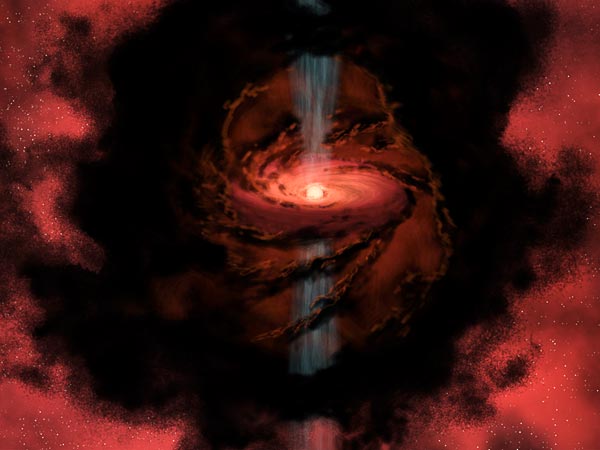A Wild Cosmic Squirt Gun Appears
Wouldn’t want to be hit by this one though. It shoots its water bullets at 200,000 km/h (124,000 mph), and at a temperature of 100,000 degrees celsius (180,000 degrees fahrenheit).

Seven hundred and fifty light-years from Earth, a young, sunlike star has been found with jets that blast epic quantities of water into interstellar space, shooting out droplets that move faster than a speeding bullet.
The discovery suggests that protostars may be seeding the universe with water. These stellar embryos shoot jets of material from their north and south poles as their growth is fed by infalling dust that circles the bodies in vast disks.
“If we picture these jets as giant hoses and the water droplets as bullets, the amount shooting out equals a hundred million times the water flowing through the Amazon River every second,” said Lars Kristensen, a postdoctoral astronomer at Leiden University in the Netherlands.
“We are talking about velocities reaching 200,000 kilometers [124,000 miles] per hour, which is about 80 times faster than bullets flying out of a machine gun,” said Kristensen, lead author of the new study detailing the discovery, which has been accepted for publication in the journal Astronomy & Astrophysics.
What’s really exciting about the discovery is that it appears to be a stellar rite of passage, the researchers say, which may shed new light on the earliest stages of our own sun’s life—and how water fits into that picture.
“We are only now beginning to understand that sunlike stars probably all undergo a very energetic phase when they are young,” Kristensen said. “It’s at this point in their lives when they spew out a lot of high-velocity material—part of which we now know is water.”
Like a celestial sprinkler system, the star may be enriching the interstellar medium—thin gases that float in the voids between stars. And because the hydrogen and oxygen in water are key components of the dusty disks in which stars form, such protostar sprinklers may be encouraging the growth of further stars, the study says.